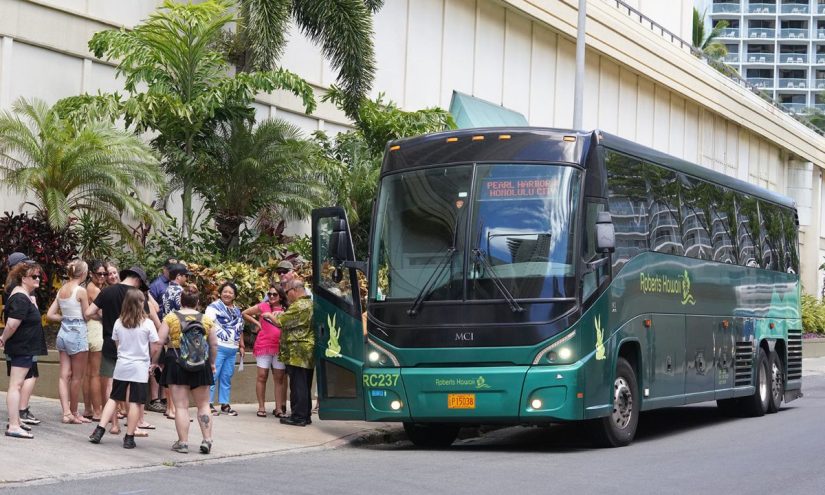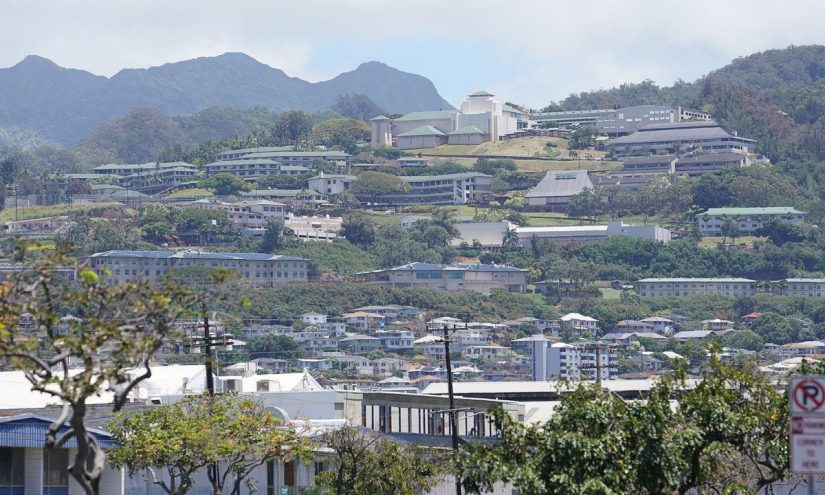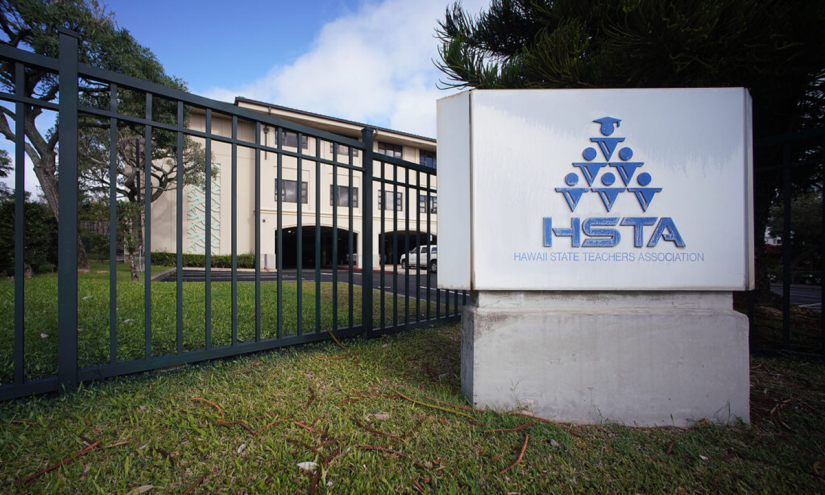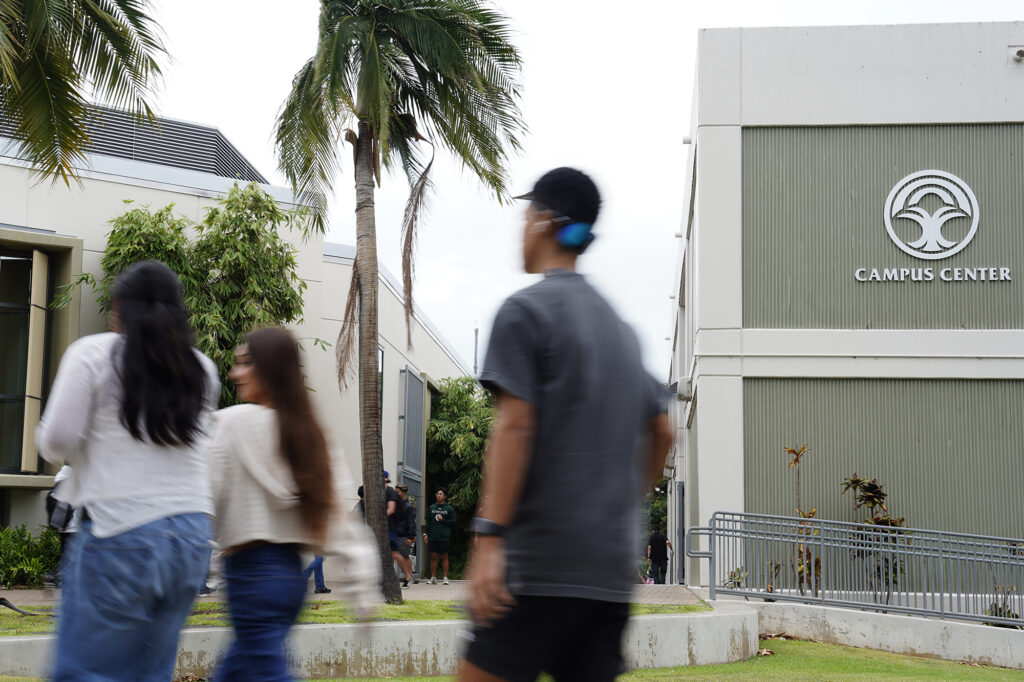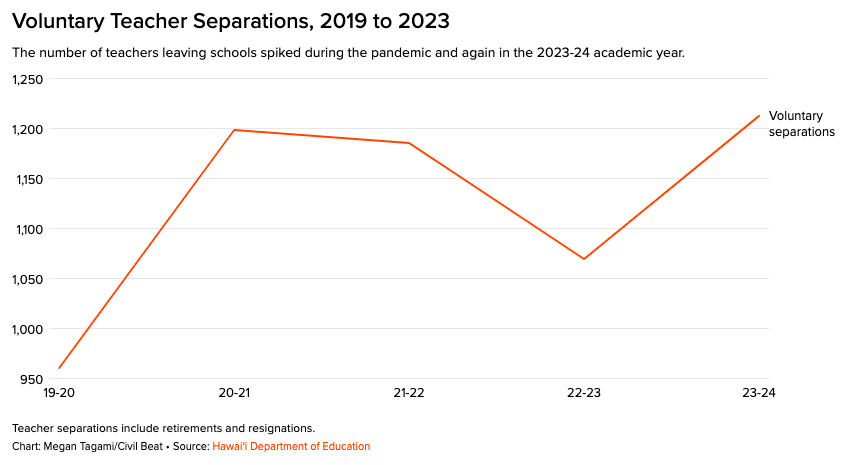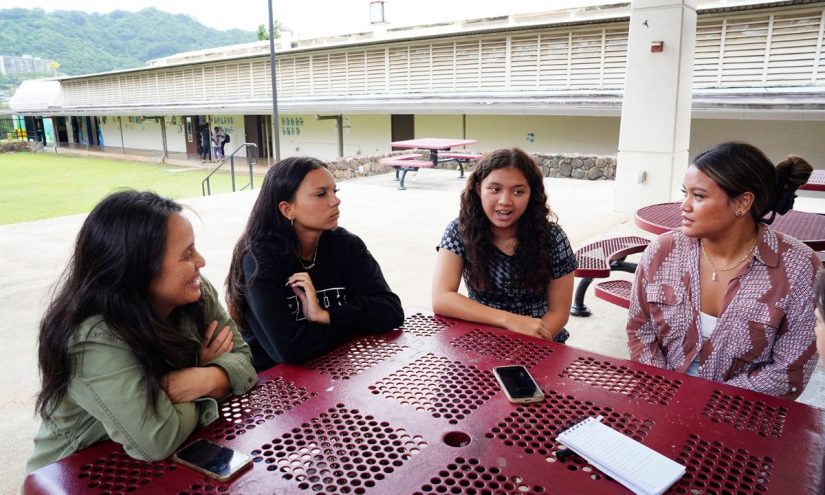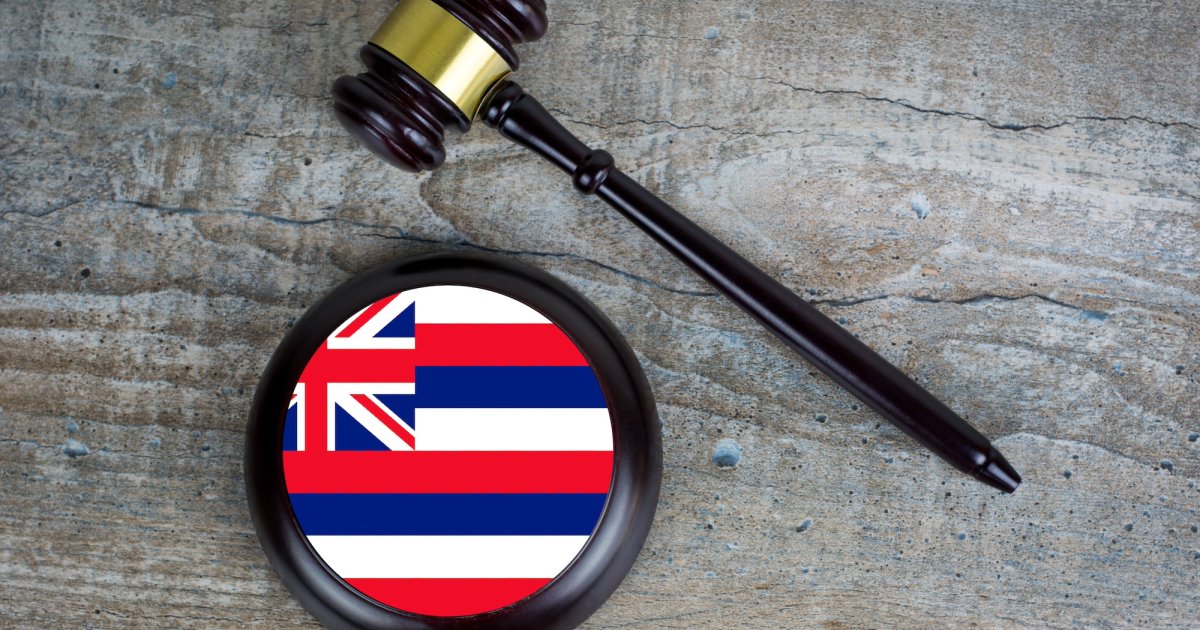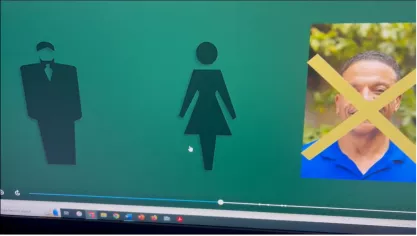Get stories like this delivered straight to your inbox. Sign up for The 74 Newsletter
Sarah Osofsky returned to school last year to earn her master’s degree in social work, hoping to give back to her community and find a job that would pay enough to survive Hawaiʻi’s high cost of living.
Now, less than two weeks away from graduation, the mother of two is struggling to find a position that can sustain her family.
Most social work jobs she’s seen in recent months offer salaries of $60,000 or less — enough to disqualify her from safety net programs like food stamps, but not enough to comfortably provide for her kids. She’s considered moving back to California where she has family who could support her, but she wants to stay in Hawaiʻi so her children can be near their dad.
“What I’m balancing right now is, do I take a low, low paying job that then I’ll qualify for services like food stamps and Medicaid,” Osofsky said, “or do I hold out and try to find those few and far between really good jobs that will make enough so I don’t qualify but I don’t need it.”
Osofsky’s struggle is a familiar one for working families in Hawaiʻi. In 2024, nearly 30% of Hawaiʻi households were living paycheck-to-paycheck and struggling to afford basic necessities like housing, child care and food, according to an annual count of the state’s ALICE families — an acronym for people who are asset limited, income constrained, and employed.
Like Osofsky, roughly 40% of these families considered leaving the state over the past year, according to a study from Aloha United Way.
While some reports indicate that more locals have been returning to Hawaiʻi in the last few years, the state’s high cost of living continues to drive some families away, straining the public education system and economy.
Earlier this year, the Department of Education said its kindergarten enrollment dropped from 13,000 in 2019 to nearly 10,800 this year, citing estimates that 20% of people leaving Hawaiʻi are school-aged kids. The department is now starting the process of consolidating small schools, although it hasn’t yet identified which campuses are at risk of closure.
A few years ago, state lawmakers grappling with the Covid-19 pandemic proposed a bold slate of reforms to improve the plight of working families: free school meals for all, universal access to preschool and paid family leave. But the state’s big plans for progress have resulted in incremental steps, and some families and advocates say change isn’t happening quickly enough.
Lawmakers this session created a working group to study paid family leave but failed to turn the yearslong proposal into law. The state expanded eligibility for preschool tuition subsidies and funded preschool construction but failed to address the ongoing shortage of early learning educators. And Senate Bill 1300 — considered one of the biggest wins for students this year — expanded access to free school meals but stopped short of providing them for all kids.
At the same time, uncertainty looms around the future of programs that rely on federal dollars to support working families, including school meals and early learning centers.
Amid the upheaval, state lawmakers were hesitant to pass big spending measures this year, opting instead to set aside $200 million to help Hawaiʻi prepare for federal funding cuts. But some advocates say now is exactly the time for the state to make a bigger investment in families.
“The state Legislature, and frankly, the counties, should be thinking, ‘Bad stuff is coming,’” said Deborah Zysman, executive director of Hawaiʻi Children’s Action Network. “We don’t quite know what yet, but we should be thinking about how to take care of our own people.”
An Urgent Need For Child Care
During the Covid-19 pandemic, Osofsky worried about the social development of her son, who was just turning 2 when lockdown restrictions began. But when he began attending the University of Hawaiʻi Mānoa Children’s Center later that year, Osofsky said, he received services for his speech delay and became comfortable making friends and recognizing letters.
But paying for preschool was a challenge, Osofsky said. The Preschool Open Doors program provides a state subsidy to help cover tuition, but her son was ineligible when he started because the program only covered 4-year-olds at the time. The program expanded to include 3-year-olds last year.
Hawaiʻi has pledged to offer preschool to all 3- and 4-year-olds by 2032. The Ready Keiki initiative, led by Lt. Gov. Sylvia Luke, currently estimates the state needs to add more than 330 classrooms in the next seven years to provide preschool to an additional 6,700 children.
While lawmakers successfully expanded access to tuition subsidies and funded more preschool construction this year, progress toward the state’s ambitious goal has slowed on other fronts.
One successful bill this session expands eligibility for preschool subsidies by including 2-year-olds and repealing the requirement that families must use the subsidy at a nationally accredited provider, which has created financial and administrative barriers for smaller programs in the past, Zysman said.
But the Department of Human Services is on track to spend only $20 million of its $50 million budget for preschool subsidies this year, said Scott Morishige, administrator of the department’s Benefit, Employment and Support Services Division.
To ramp up its spending, DHS is considering expanding the income eligibility to 500% of the federal poverty line. If DHS adopts the rules this summer, Morishige said, a family of four could make up to $184,000 annually and still be eligible for assistance, compared to the past income limit of $110,000.
The state budget sets aside $20 million to build more public preschool classrooms over the next three years. The state plans on opening 25 public preschool classrooms this fall and an additional 25 classrooms the following year, far less than previous estimates that Hawaiʻi could build 40-50 classrooms annually.
While the state would like to take a more aggressive approach to opening public preschool classrooms moving forward, Luke said, the Ready Keiki initiative is also relying on private providers and charter schools to help expand access. The state is starting larger construction projects, like standalone preschool centers, that could add seats more rapidly as they open in the next few years.
“There is an urgency for us to open as many preschool seats as we can,” she said.
But families’ demand for preschool could grow beyond what the state has anticipated if the federal government stops funding its own child care programs. Head Start, which relies on federal funding and serves roughly 2,800 children and pregnant mothers, is currently Hawaiʻi’s largest provider of early learning services, said Ryan Kusumoto, president and CEO of the nonprofit Parents And Children Together.
The Trump administration has previously threatened to cut funding entirely for Head Start, although the most recent version of the federal budget keeps program funding intact. Some Hawaiʻi Head Start programs are still waiting to receive confirmation for next year’s funding, and the recent closure of some regional offices could create backlogs in awarding this money, said Ben Naki, president of the Head Start Association of Hawaiʻi.
“There’s no existing infrastructure that can pick up those 2,800 kids,” Kusumoto said. “And we’re talking about kids who don’t have any other resources.”
First Steps For Free Meals
Since September, Christine Russo said paying for meals has become a greater challenge for her family as her twins joined her 10-year-old in attending school every day. She sets aside roughly $180 each month so her kids can purchase breakfast and lunch at school — a challenge for the public school teacher, whose husband is a retail store manager.
Russo’s kids don’t qualify for free or reduced-price school meals, but she said her family could still benefit from the ongoing push to bring back a pandemic-era program that made meals free for all students.
Lawmakers stopped short of funding a universal free meals program this year but took incremental steps by passing Senate Bill 1300. Starting next year, the state will provide free school meals to students who currently qualify for reduced-price lunch. The following year, eligibility for free school meals would be expanded to families making up to 300% of the federal poverty level, or roughly $110,000 for a family of four.
The bill appropriates $565,000 to provide more free school meals next year and an additional $3.4 million for the program’s expansion the following year. More than 68,000 students in the Department of Education qualified for free meals this year, and 10,000 qualified for reduced-price meals.
The bill also requires schools feed students who don’t have enough money to purchase lunch or already have meal debt. Students have accrued more than $105,000 in meal debt this school year, DOE communications director Nanea Ching said.
At Castle High School, junior Tayli Kahoopii said she receives free meals, but some of her friends don’t qualify. When someone doesn’t have enough money in their account to purchase lunch, the register makes a buzzing sound — loud enough to embarrass students and, in one instance, deter Kahoopii’s friend from trying to purchase meals for a week.
“On a daily basis, you see kids getting their food taken away, and there’s really nothing that they can do about it,” Kahoopii said, adding that it’s difficult for students to learn and focus when they don’t have access to food during the school day.
Rep. Scot Matayoshi, who has introduced bills for the past three years proposing free school meals, said SB1300 is an important step. But he still plans on advocating for universal free school meals in the coming years, especially since it would reduce the administrative barriers schools and families face in determining who qualifies for free meals.
Daniela Spoto, director of food equity at Hawaiʻi Appleseed, said providing all students with free school meals could also become more important with federal funding on the line. Proposed federal cuts to a program allowing schools in low-income areas to provide free meals to all children could impact 52 schools and more than 27,000 kids in Hawaiʻi, according to estimates from the Food Research and Action Center.
“It should be a staple for our schools to have free school lunch,” said Castle junior Haliʻa Tom-Jardine, who will begin qualifying for free school meals next year. “It should be a right.”
‘Bad Things Are Coming’
During the pandemic, people saw lawmakers step up and meet the needs of working families through federal initiatives like the child tax credit and free school meals, said Kayla Keehu-Alexander, vice president of community impact at Aloha United Way. Now, she said, state lawmakers need to do the same during times of uncertainty.
“If we don’t start making some big policy changes around the cost of living, around housing, we could potentially be looking at a larger out-migration than we’ve had in the past,” she said.
Hawaiʻi is already starting to see the possible impacts of out-migration on its schools and economy. While some people are coming back to Hawaiʻi to raise families, Keehu-Alexander said, it’s unclear if they’re joining the workforce in areas with the worst staffing shortages, like education or healthcare.
Looking ahead to next year, Zysman said she would like to see a successful bill establishing paid family leave in Hawaiʻi, which would provide caregivers paid time off to care for their loved ones. Lawmakers have failed to pass a bill for several years, although they did approve a resolution last month establishing a working group that will study how to implement paid family leave over the next year.
Zysman added that she’s concerned about the long-term impacts of the historic tax cut lawmakers passed last year. While she supports cuts that can make it more affordable for people to stay in Hawaiʻi, she said, she’s worried that tax breaks for the wealthiest will make it harder for the state to fund programs that can keep working families afloat.
“In my gut, I feel like bad things are coming,” Zysman said, “and we should have acted more preemptively.”
This story was originally published on Honolulu Civil Beat. Civil Beat’s education reporting is supported by a grant from Chamberlin Family Philanthropy.
Get stories like these delivered straight to your inbox. Sign up for The 74 Newsletter

